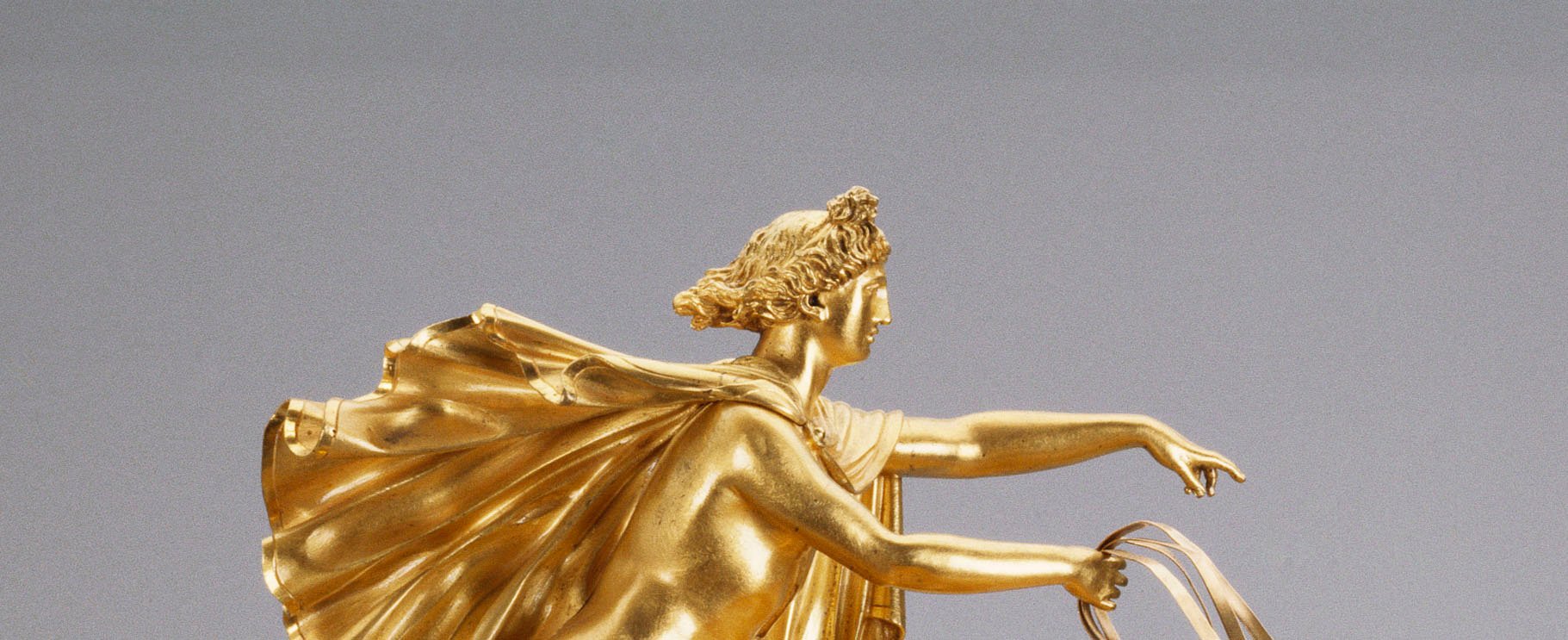
ANTONIO ANGELO AMASTINI (1754-C. 1816)
Snuff box with a cameo of Apollo
Cameo: c. 1810; Snuffbox: c. 1819-38RCIN 4259
Rectangular straight sided hinged blond tortoishell box. Lid inset with gold frame surrounding an onyx cameo of right profile bust of Apollo in high relief, toga tied at left shoulder. Gold thumbpiece and prominent gold hinge.
Struck on the inner hinge with obscured maker’s mark, third standard mark and excise mark for gold, Paris, 1819-38, and an unidentified mark.
The large cameo depicts the bust of Apollo in profile to the right. He wears a cloak draped around his shoulders and fastened on his right shoulder with a circular brooch. His long curled hair is secured by a fillet and topknot.
The cameo is curiously signed to the left of the back of Apollo’s head: K T A I AMASTINΠ. in a mixture of Greek and Latin letters. It is almost certainly the work of the Roman gem-cutter Angelo Antonio Amastini (1754 - after 1815) and the signature should be read as A A AMASTINI. Amastini is known to have signed his work in a number of ways and it appears that in this case he used pseudo-Greek lettering for an antique effect.
The reputed provenance of this snuffbox, as set down by Queen Mary, indicates that it was formerly in the collection of George IV and given by him to his favourite, Elizabeth, Marchioness Conyngham (?1766-1861). It was subsequently presented to Queen Mary by Sir Guy Laking, Keeper of the King's Armoury at Windsor.
Text adapted from Ancient and Modern Gems and Jewels in the Collection of Her Majesty The Queen, London, 2008







